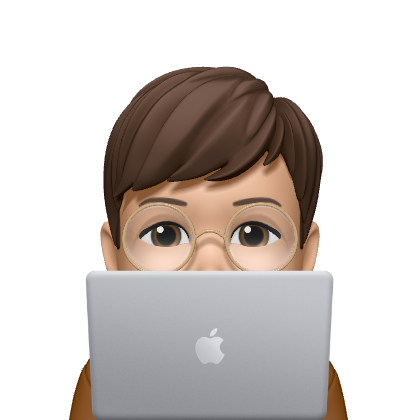 AI 개발, 어렵다고요? Langflow로 쉽고 빠르게 시작하는 법!
AI 개발, 어렵다고요? Langflow로 쉽고 빠르게 시작하는 법!
코딩 없이 나만의 AI 에이전트와 워크플로우를 만들어보세요!AI, 인공지능... 요즘 가장 뜨거운 기술이지만, 막상 시작하려니 코딩도 복잡하고 어디서부터 손대야 할지 막막하게 느껴지시나요? 멋진 AI 아이디어가 있지만 기술적인 장벽 때문에 망설이고 계신가요?걱정 마세요! 여기 여러분의 AI 개발 여정을 훨씬 쉽고 즐겁게 만들어 줄 도구가 있습니다. 바로 'Langflow'입니다.완전 초보자도 Langflow를 통해 어떻게 AI 애플리케이션을 만들 수 있는지 함께 알아봅시다!Langflow, 대체 뭔가요?Langflow는 한마디로 '로우코드(Low-code)' AI 개발 도구입니다. '로우코드'란 코딩을 거의 또는 전혀 하지 않고도 소프트웨어나 애플리케이션을 만들 수 있게 해주는 방식을 말해요.특히 Lan..
 Langflow 시작하기: 기초 화면 구성 살펴보기
Langflow 시작하기: 기초 화면 구성 살펴보기
AI 애플리케이션 개발, 특히 복잡한 에이전트나 RAG(Retrieval Augmented Generation) 시스템을 구축하는 것은 때때로 까다로울 수 있습니다. 코드를 작성하고 디버깅하는 과정에서 많은 시간과 노력이 소요되곤 하죠. 이때 Langflow와 같은 로우코드(Low-code) 도구는 개발 과정을 혁신적으로 단순화해 줍니다.Langflow는 시각적인 인터페이스를 통해 AI 워크플로우를 직관적으로 설계하고 테스트할 수 있게 해주는 강력한 도구입니다. 코드를 최소화하면서도 강력한 기능을 구현할 수 있도록 돕죠.이번 글에서는 Langflow를 처음 접하는 분들을 위해 기본적인 화면 구성을 함께 살펴보며, Langflow의 세계로 첫걸음을 떼는 데 도움을 드리고자 합니다.Langflow, 왜 시각..
AI 개발, 특히 에이전트나 RAG 애플리케이션 구축에 관심 있으신가요? Langflow는 코드를 적게 쓰고도 강력한 AI 워크플로우를 만들 수 있게 돕는 시각적 도구입니다. (참고 1, 2) 복잡한 파이썬 환경 설정 없이도 Langflow를 사용하고 싶다면 Docker가 좋은 해결책이 될 수 있습니다.이번 글에서는 macOS 환경에서 Docker를 이용해 Langflow를 쉽고 깔끔하게 설치하고 실행하는 방법을 알아보겠습니다. Docker를 사용하면 시스템 환경에 영향을 주지 않고 Langflow를 격리된 환경에서 실행할 수 있어 편리합니다.시작하기 전에: 준비물Langflow를 Docker로 설치하기 전에 다음이 필요합니다.macOS 운영체제가 설치된 컴퓨터Docker Desktop 설치 및 실행: ..
AI 개발이 점점 중요해지는 시대에, 복잡한 AI 에이전트와 RAG(Retrieval Augmented Generation) 애플리케이션을 효율적으로 구축하는 것은 많은 개발자들의 과제입니다. 이때 Langflow는 로우코드(Low-code) 방식으로 이러한 작업을 시각적이고 직관적으로 수행할 수 있게 해주는 강력한 도구입니다.Langflow는 오픈 소스이며 Python 기반으로 작동하기 때문에, 특히 리눅스 환경에서 개발하는 분들에게 매우 유용합니다. 이번 글에서는 리눅스 시스템에 Langflow를 설치하고 시작하는 방법을 단계별로 안내해 드리겠습니다.Langflow란 무엇인가요?Langflow는 AI 워크플로우, 특히 LLM(Large Language Model) 기반의 에이전트 및 RAG 애플리케이..
안녕하세요! AI 개발에 관심 있는 여러분, 특히 로우코드/노코드 도구를 활용하여 빠르고 효율적으로 AI 애플리케이션을 구축하고 싶으신가요? 그렇다면 Langflow는 여러분에게 꼭 필요한 도구일 수 있습니다.Langflow는 시각적인 인터페이스를 통해 복잡한 AI 에이전트와 RAG(Retrieval Augmented Generation) 애플리케이션을 쉽게 설계하고 배포할 수 있도록 돕는 강력한 로우코드 플랫폼입니다. 드래그 앤 드롭 방식으로 다양한 컴포넌트(모델, 프롬프트, 데이터 소스 등)를 연결하여 아이디어를 빠르게 현실로 만들 수 있죠.클라우드 버전도 훌륭하지만, 때로는 로컬 환경에서 자유롭게 실험하고 싶을 때가 있습니다. 이 글에서는 Windows 운영체제에 Langflow를 로컬로 설치하고 ..
 AI 애플리케이션 구축, 더 이상 어렵지 않다: Langflow
AI 애플리케이션 구축, 더 이상 어렵지 않다: Langflow
Langflow는 시각적인 인터페이스를 통해 AI 애플리케이션을 구축하는 도구이므로, 코드를 직접 작성하기보다는 컴포넌트(블록)를 연결하는 방식으로 진행됩니다. 예제: 기본적인 챗봇 플로우 만들기이 플로우는 사용자의 입력을 받아 언어 모델(LLM)에게 전달하고, 모델의 응답을 사용자에게 보여주는 가장 단순한 형태의 챗봇입니다. 필요한 컴포넌트:Chat Input: 사용자의 채팅 입력을 받는 컴포넌트입니다.Prompt: 언어 모델에게 어떤 역할을 하거나 어떤 형식으로 응답하라고 지시하는 프롬프트 내용을 정의하는 컴포넌트입니다. (선택 사항이지만, 모델 제어에 유용합니다.)Model (예: OpenAI Model, Anthropic Model 등): 실제 언어 모델 API와 연동하여 텍스트를 생성하는 컴포..
- Total
- Today
- Yesterday
- 노코드
- ai 개발
- nocde
- flutterflow university
- 초간단챗봇
- langflow
- gemini3.0
- spline
- 로우코드
- Flutter
- mxmaster4
- AI개발
- dify
- 스플라인
- FlutterFlow
- Rag
- 플러터
- AI
- 로지텍
| 일 | 월 | 화 | 수 | 목 | 금 | 토 |
|---|---|---|---|---|---|---|
| 1 | 2 | 3 | 4 | 5 | 6 | |
| 7 | 8 | 9 | 10 | 11 | 12 | 13 |
| 14 | 15 | 16 | 17 | 18 | 19 | 20 |
| 21 | 22 | 23 | 24 | 25 | 26 | 27 |
| 28 | 29 | 30 | 31 |
